
Augmented Reality at WBCA: Marlena Myles' Journey into Indigenous Wisdom and Heritage
Published September 20th, 2023 by Rose-Marie Athiley
As part of White Bear Center for the Arts' NEA Big Read Program, Myles reframes AR as a radical tool for connection to land and history
Currently gracing White Bear Center for the Arts (WBCA) is an augmented reality exhibit by Marlena Myles that invites visitors to take a step beyond mere spectatorship and become active participants and learners of indigenous culture and history.
Myles was invited by WBCA to create the exhibit as a part of their National Endowment for the Arts (NEA) Big Read Program. The NEA Big Read — in partnership with Arts Midwest — aims to leverage “the power of a shared reading experience…to inspire meaningful conversations, artistic responses, and new discoveries and connections in each community.”
This is WBCA’s second year in a row receiving an NEA Big Read grant. This year their collaborators include local libraries, the Mahtomedi Garden Club, the American Society of Botanical Artists, Many Faces of White Bear Lake, and Century College.
Each grantee selects a book from the Big Read list; WBCA chose Catalog of Unabashed Gratitude by Ross Gay. Creative Services Director Sara Nephew says the choice reflects the city’s community of farmers and growers.
“The White Bear Lake and NE Metro are home to a variety of gardens, local farms, and orchards,” she says. “Catalog of Unabashed Gratitude encourages readers to consider what it means to be someone who not only cultivates food and flowers but also memories and connections with others.”
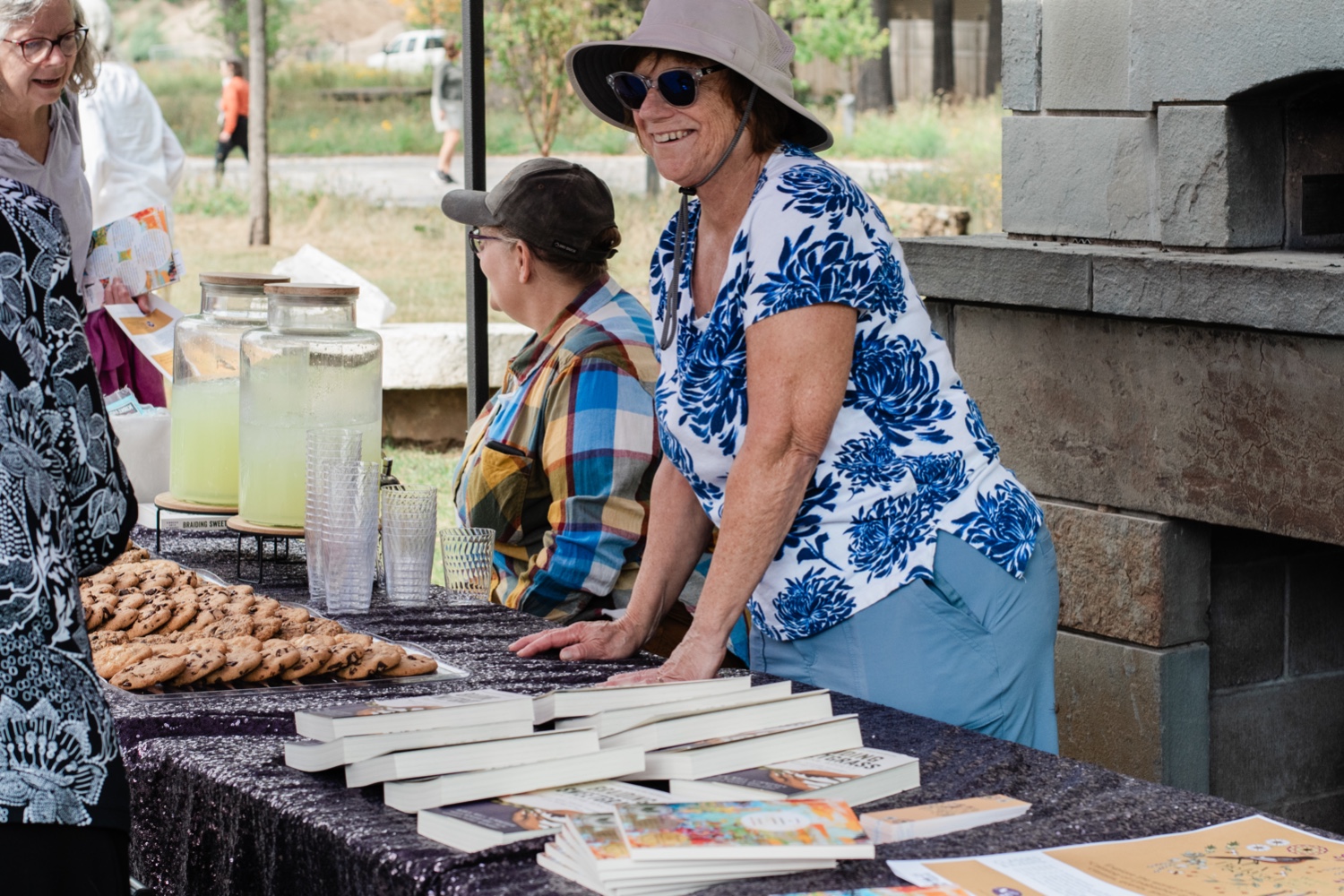
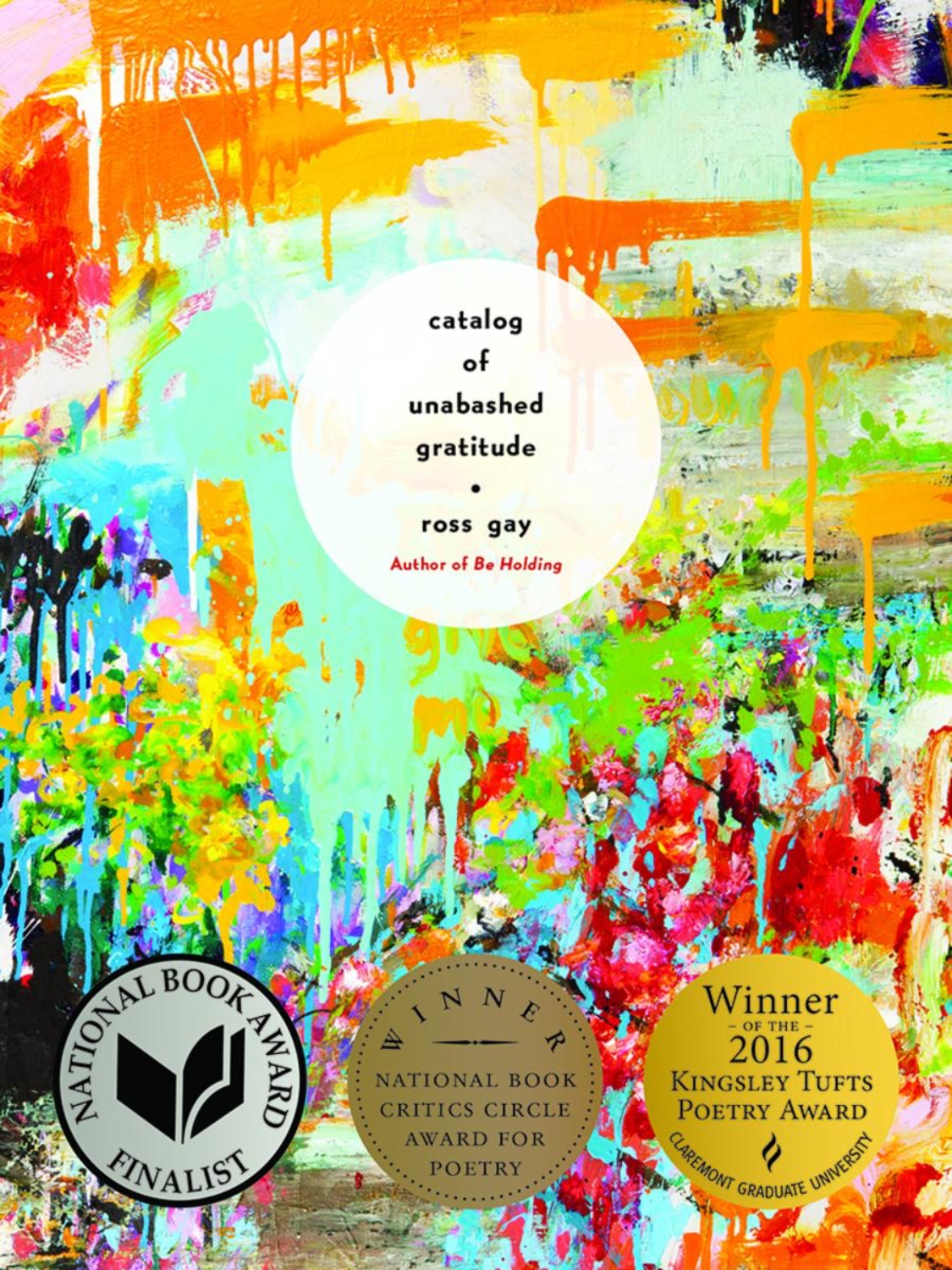
Top: Volunteers passing out books at WBCA's NEA Big Read kick-off event. Photo courtesy of WBCA. Bottom: Ross Gay's Catalog of Unabashed Gratitude.
With themes of love, grief, food, seeds, and the natural world, Nephew hopes that by engaging in conversations inspired by the book, deeper connections are formed between “local growers, neighbors, and the land beneath our feet.” She believes that by engaging in a collective reading experience, participants gain valuable connection skills.
“We grow when we read and share our perspectives and personal stories with others,” she says. “The more we read, the more skills we develop such as critical thinking, effective communication, empathy, and cultural awareness.”
Marlena Myles’ exhibit is a fusion of her lived experiences as a Dakota person and her interpretation of Ross Gay’s Catalog of Unabashed Gratitude. Motivated by the lack of education about Minnesota’s history as Dakota Homelands and about Dakota Peoples, Myles (Spirit Lake Dakota/Mohegan/Muscogee) uses art to teach how significant the land is to the Dakota people via various mediums — Dakota land maps, murals, and augmented reality installations.
“I grew up and I didn’t see anything that showed that this was Dakota Homelands,” she says. “I lived in Little Earth, which is a Native American urban community in Minneapolis, and I attended Four Winds, which is a Native magnet school. And outside of those areas, I never really saw anything that showed that this is where Dakota people originated from… we cannot continue not telling correct histories and not letting Native people tell our stories.”
In telling Dakota history, Myles employs augmented reality in her art because of its ability to draw people together, into nature. She witnessed the rise of Pokémon GO in 2016, and while she herself didn’t play, she was inspired by how it created connections amongst communities.
“They were going outside…they were having a good time. They were sharing what they were doing… It brought them out of their house into their neighborhoods…and I think it was sort of building community through participation in this game,” she says.
Myles also realized that augmented reality would allow her access to spaces that would usually require permits or land deeds to use as part of art installations.
“I saw that people would have to go to random places like a gym or a grocery store or a library [and the Pokémon GO developers] didn’t need permission to put this little character where they're putting them,” she says. “It kind of inspired me… Native people, we had our land stolen from us and a lot of our sacred sites we don't have ownership of, but our stories are still there. Our connection is still there. So augmented reality allows me to tell those stories without needing permission.”
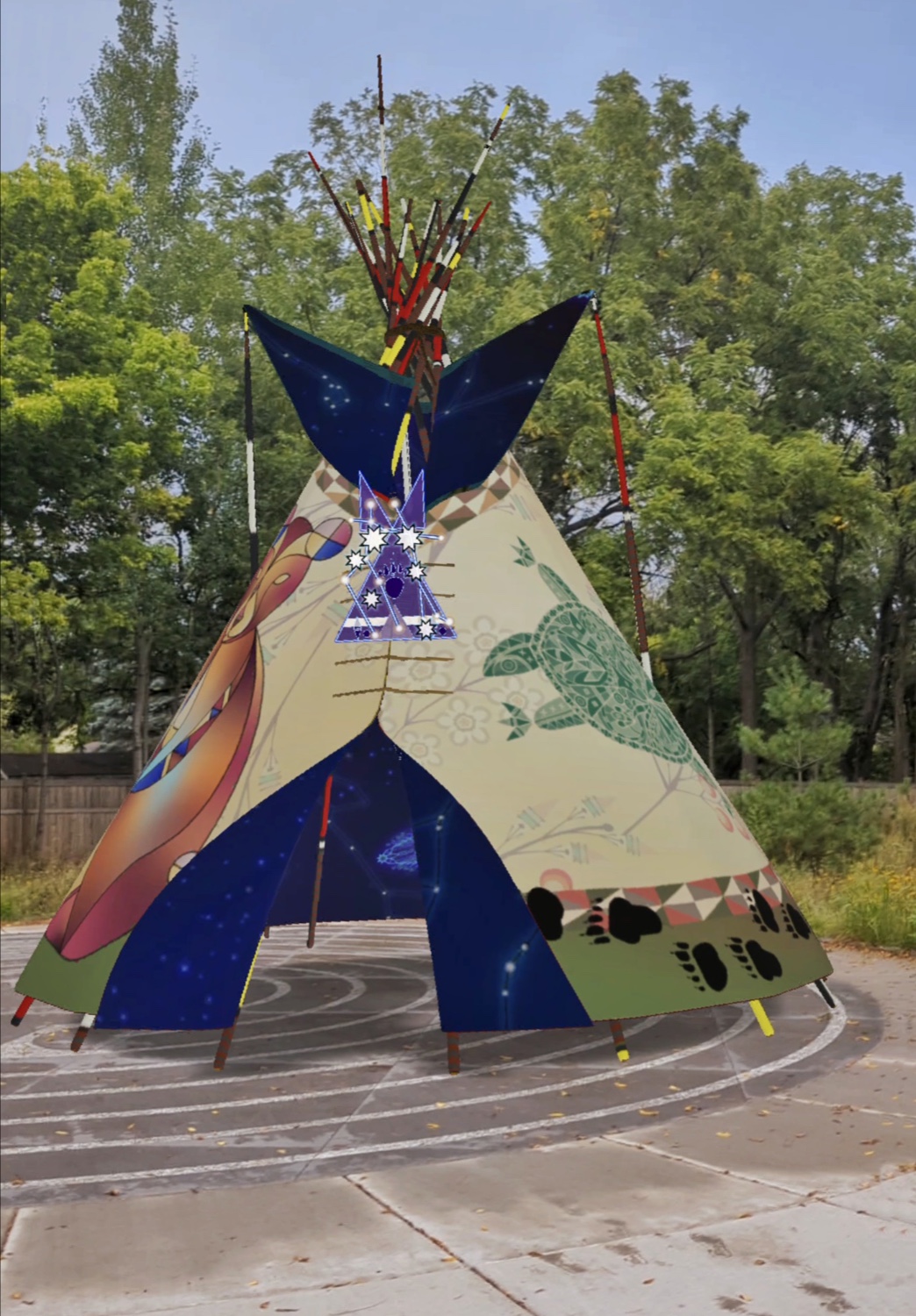
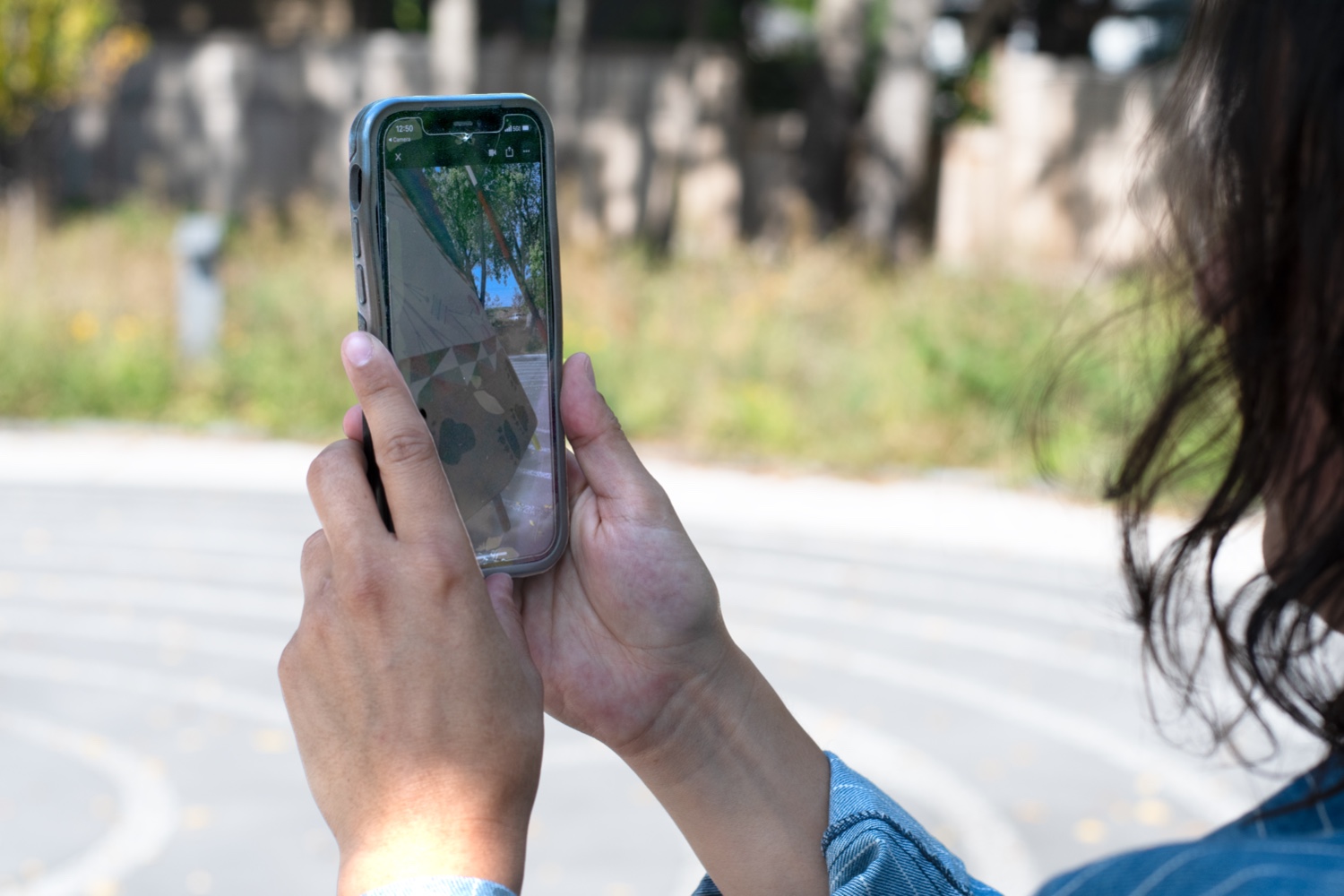
Top: Marlena Myles, Bear’s Lodge, 2023. Adobe Aero. The teacher of medicine, Mahto the bear, welcomes you into his home, which is reflected above us in the Dakota night sky as Mahto tipi, the bear's lodge (aka Gemini constellation). Bottom: A visitor using their phone to experience the exhibition. Photo courtesy of WBCA.
This value and incorporation of outdoor space is present in her exhibit at WBCA, which lives on its outdoor campus. Walking along the paths and through the garden, visitors learn from the land as traditionally it’s been done. As Myles put it “augmented reality just allows me to teach traditionally using modern tech.”
One of Myles’ installations is called Thunder Being’s Horse. This particular installation was one already brewing in her mind, so when she read the poem “Becoming a Horse” in Catalog of Unabashed Gratitude, it resonated deeply with her.
“To Dakota people…it represents movement and freedom, and we see the horse as a relative…and [the speaker] talks about touching the horse, looking into its eyes and then just becoming the horse…being able to see through the eyes of another animal.” This concept, she notes, holds deep significance in Native cultures, where such practices were employed to gain knowledge and spiritual power.
“And so that poem to me showed how the author had found peace by divorcing themselves and embracing how the horse sees…to me I felt that's exactly how Native people, indigenous people relate to horses as a relative, as something that we can learn from, that helps us reconnect and stay as part of the sacred hoop of nature.”
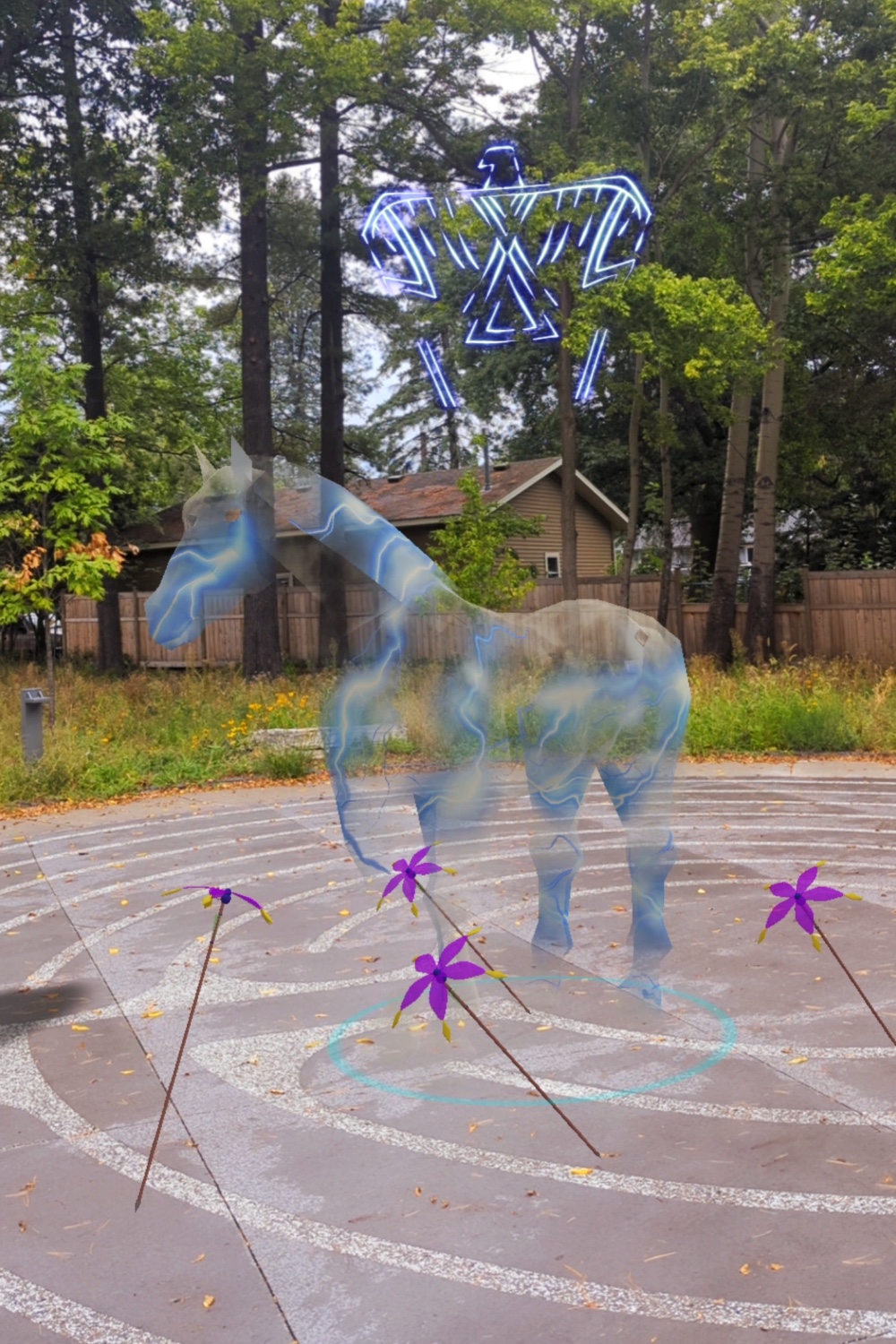
Marlena Myles, Thunder Being’s Horse, 2023. Adobe Aero. Every year Dakota people celebrate the return of Wakinyan, the thunder being, who makes up the plant nation of Unci Makha, Grandmother Earth.
The result of this profound connection between poem and artist is an immersive augmented reality experience. The installations have an ethereal air about them — you have no choice but to simultaneously hold both the truths of our histories and the realities of our present. That is the magic of augmented reality. Whereas virtual reality isolates you from the real world and places you in an artificial environment, augmented reality supplements your physical world. In this case, our walk through the garden is enhanced by vibrant artwork, sound, music, and spoken word.
Each installation is introduced by a sign with a QR code. The signs also contain educational information; for example, the installation Medicine Bear informs visitors about Dakota beliefs about Mahto (bear).
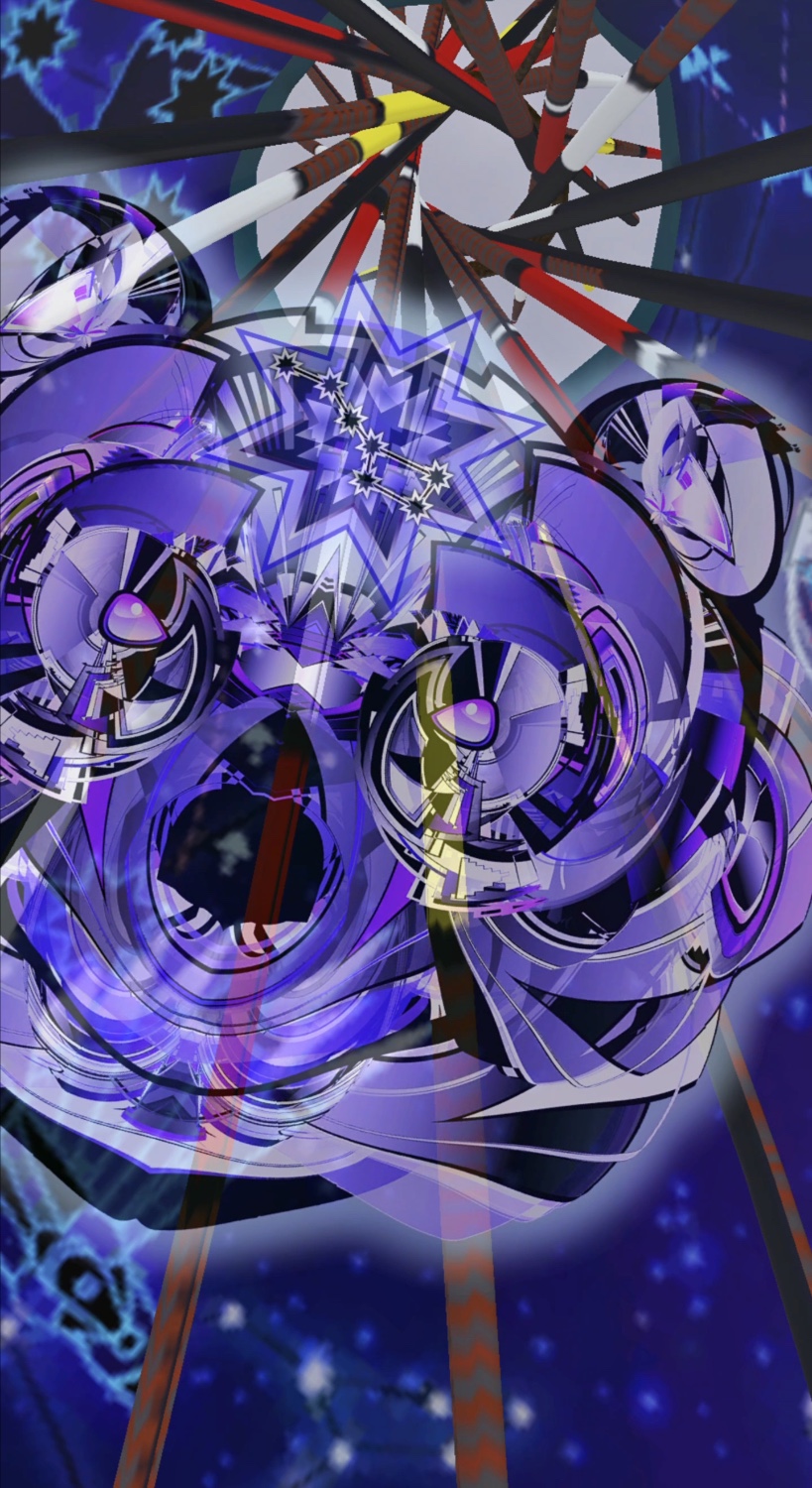
Marlena Myles, Medicine Bear, 2023. Adobe Aero. Dakota people believe Mahto (bear) is the chief healer among animals because of his knowledge of medicine plants & his ability to use these to heal himself and others.
While talking about this particular installation, Myles explains how White Bear Lake got its name: “One of the [Dakota] stories is that they saw a white bear, and the bear to us is the chief healer. So the bear naturally knows what roots to dig up, what plants to eat. And so we say we learned all about medicine plants from the bear, and the white, it meant like a spiritual purity that this bear had. So that's why we remember it by naming that lake after that.”
“Native people, we didn't have a written language prior to the arrival of Europeans. And so a lot of our storytelling was through oral traditions… looking at an object or a landscape or a plant or an animal, and recalling the stories that we connect to it.”
These oral traditions form a bridge between the past and present, where the natural world and its inhabitants are imbued with profound meaning, echoing through generations.
She likens it to apps on a phone. “You look at all these icons, you know what they are, and you click it, it opens up something, it opens up your photos, opens up memories, it opens up an app. So it's kind of like when I look at a plant and I know the medicine uses or the storytelling about how and why it has its colors or its special forms — all of that comes through.”
Her hope is that visitors will recall what they read while experiencing her exhibit and “it becomes embedded in them as oral traditions.”
“Next time they look at the horse, they might try to look through the horse's eye or your pets or anyone you know, and that I think leads to us looking at other humans, like how do you see the world?”
That way of thinking is the goal of the NEA Big Read, as the WBCA frames it, to broaden “our understanding of our world, our communities, and ourselves through the power of a shared reading experience.” This exhibit and the program are a testament to how even digital art can reshape our understanding of the natural world around us. ◼︎
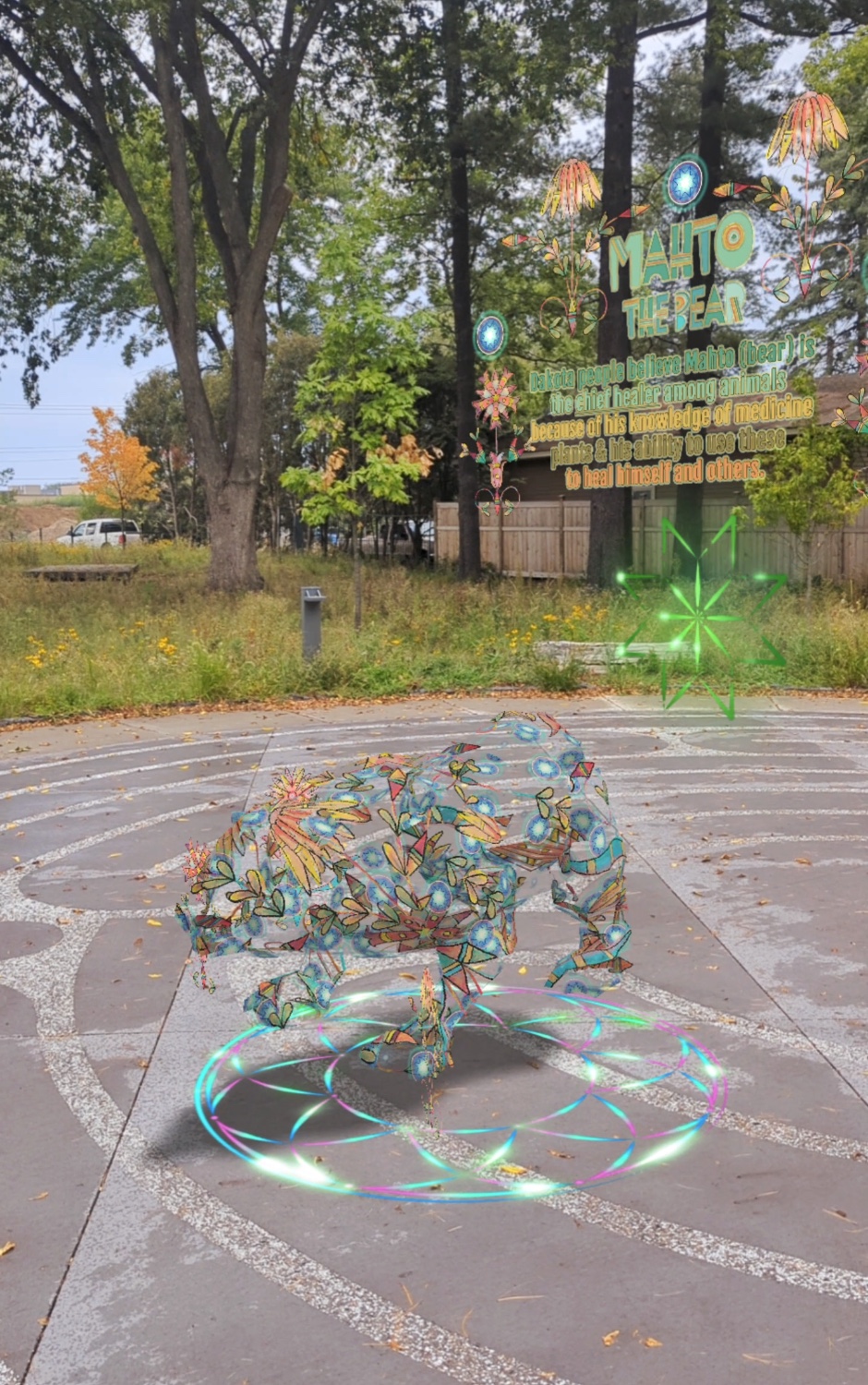
Marlena Myles, Medicine Bear, 2023. Adobe Aero.
Marlena Myles’ exhibit will be on view at White Bear Center for the Arts through November 18. See more of the artist's work at her website marlenamyl.es, or follow her on Instagram @mylesdesigns.
All artwork images courtesy of the artist.
Upcoming WBCA Big Read Events:
Perennial & Medicinal Herb Talk with Pete Weiden
Tuesday, October 17, 7 – 8:30pm
Book Club Discussions
Thursday, October 20, 6:30pm
Location: Washington County Library, Wildwood Branch
Tuesday, October 25, 1pm
Location: Century College
Thursday, November 9, 2pm
Location: Ramsey County Library
This activity is made possible by the voters of Minnesota through a grant from the Metropolitan Regional Arts Council, thanks to a legislative appropriation from the arts and cultural heritage fund. 
We can't do it without you.
Help keep independent arts journalism alive in the Twin Cities.